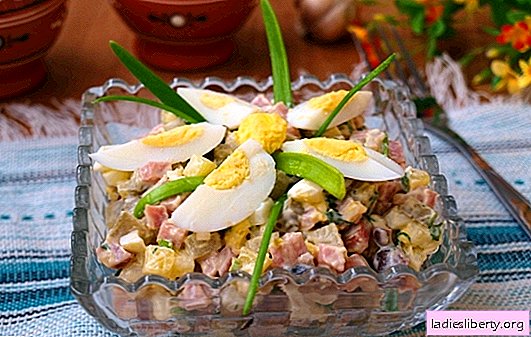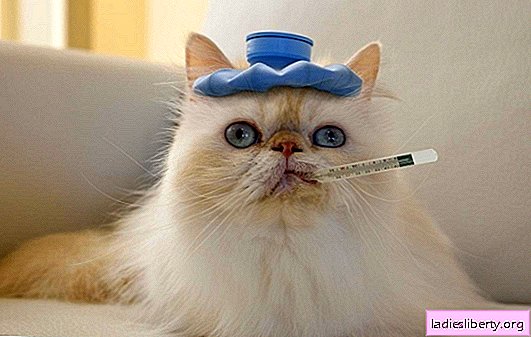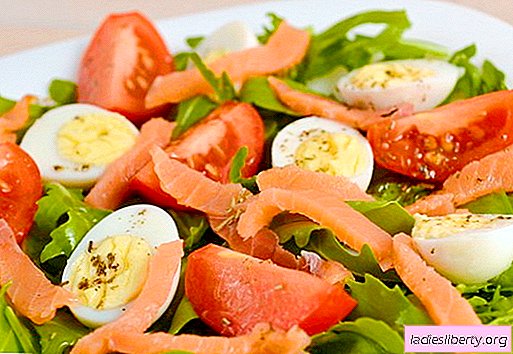
Lavender - a general description
Lavender is a perennial shrub of the Lamiaceae family. The height of lavender is usually 50-60 cm. The stems of the plant are straight, the leaves have an oblong shape, slightly bent at the edges. The color of the leaves is grayish-green. Silver shade gives them a gentle pubescence. From early June to August, lavender blooms. Her flowers, forming spike-shaped inflorescences, can have a color from bluish-violet to saturated lilac.
The medicinal properties of lavender are not its only use. Due to the pleasant smell, lavender is often used in the cosmetic and perfumery industries. Even the ancient Romans added the plant to the baths. So lavender got its name. After all, the word "lava" means "wash." The spicy taste that this plant has has allowed it to be in demand in the field of cooking.
Lavender - types and places of growth
The birthplace of the plant is considered to be the Mediterranean. Wild lavender in these places can be found now. Gradually, thanks to its unique aromatic, medicinal and culinary properties, lavender spread throughout Europe. Further, the plant appeared in Africa, in the tropical part of Asia. Then, covering a huge distance, spread to Australia and America.
In 1812, lavender appeared in Russia. Originally grown only within the botanical Nikitsky garden, lavender gradually gained the importance of industrial culture. Now lavender grows in the Krasnodar Territory, Ukraine and the North Caucasus.
Lavender - healing properties
Lavender has a calming effect, helps relieve pain. The use of lavender can increase appetite, normalize acidity, blood pressure. It is believed that this plant contributes to the outflow of bile.
Migraine pain, bouts of rheumatism, increased irritability and a strong heartbeat - in such cases, lavender can help. This plant contributes to the recovery of influenza patients.
Dried lavender in combination with marjoram, rose petals and other herbs makes medicinal teas. In pharmaceuticals, lavender is used to create galenic preparations.
Lavender - dosage forms
A week after the start of flowering of lavender, you can begin to collect medicinal raw materials. For harvesting use inflorescences of the plant. Flowers should be collected only in the morning, as soon as they open. Inflorescences are carefully cut and hung for drying in a ventilated and dark place. In the light, they can lose their wonderful color.
In Austria, lavender leaves are harvested. Do this before the flowering period of the plant.
Lavender is used in the form of syrups, decoctions and infusions. And from the plant get essential oil, which is also used for medical purposes.
Essential oil is obtained by factory processing from fresh lavender inflorescences.
Lavender - recipes
Lavender syrup is made from 200 grams of fresh lavender inflorescences. Raw materials should be filled with half a liter of boiling water, wrapped and insisted for a day. Then strain and squeeze the remainder well. Pour a new portion (200 grams) of fresh inflorescences with half a liter of the resulting infusion and leave it wrapped up for another day. Add half a kilo of sugar or honey to the strained infusion, stir well and cook, constantly stirring, until a thick syrup.
The resulting syrup helps with neurasthenia, tachycardia, migraine, colds and hoarseness. You can take syrup 3 per day for 1 tsp. with water. 30 minutes after taking the syrup, you should eat.
An amazing effect is exerted by lavender essential oil on human memory. It allows a person to quickly pack up and make the right decision in any stressful situation.
A tampon with lavender oil helps with leakage from the ear. Five drops of lavender oil on a piece of sugar contribute to appetite. With bronchitis, a few drops of lavender oil added to a teaspoon of honey will help.
Lavender infusions are prepared by pouring 2-3 teaspoons of the raw material with two glasses of boiling water. After 15 minutes, the infusion can already be drunk. As a sedative and antispasmodic, it is taken in 0.5 cups four times a day.
Lavender - contraindications
Lavender oil should not be used during pregnancy, especially in the first months. Lavender can help reduce uterine musculature.
After an abortion, it is also not recommended to use lavender oil, so as not to provoke bleeding. Do not use lavender if the patient is taking medication with iodine or iron.
The use of lavender oil in large quantities can contribute to depression and irritation of the mucous membranes of the stomach and intestines.
All lavender-based drugs have a strong effect, can be individually intolerant or cause a strong allergic reaction. Therefore, self-medication with these drugs is dangerous.
Comments











